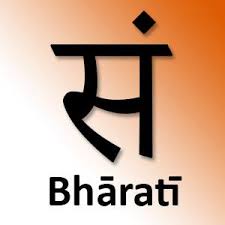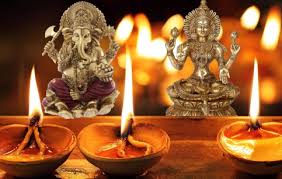





Rishi Vyasa
Vyasa in Sanskrit means "Compiler” He is the author of the Mahabharata, Vedas and Puranas, some of the most important works in the Hindu tradition. He is also called Veda Vyāsa (वेदव्यास:) "the one who classified the Vedas") or Krishna Dvaipāyana (referring to his dark complexion and birthplace). The festival of Guru Purnima is dedicated to him. It is also known as Vyasa Purnima, the day believed to be both of his birth and when he divided the Vedas. Vyasa appears for the first time as the compiler of, and an important character in, the Mahabharata. Vyasa in Sanskrit means "Compiler” He is the author of the Mahabharata, Vedas and Puranas, some of the most important works in the Hindu tradition. He is also called Veda Vyāsa (वेदव्यास:) "the one who classified the Vedas") or Krishna Dvaipāyana (referring to his dark complexion and birthplace). The festival of Guru Purnima is dedicated to him. It is also known as Vyasa Purnima, the day believed to be both of his birth and when he divided the Vedas. Vyasa appears for the first time as the compiler of, and an important character in, the Mahabharata. According to the Vishnu Purana, Vyasa was born on an island of the Yamuna at Kalpi. With the knowledge of the Vedas, the Dharmashastras and the Upanishads. At Vishnu's behest, he was reborn as Vyasa. Vyasa was the son of Sage Parashara and Satyavati, and great grandson of Sage Vashistha. Parashara had performed a severe penance to Lord Shiva,who granted a boon that Parashara's son would be a Brahmarshi equal to Vashistha. Vyasa on becaming an adult left home, promising his mother that he would come to her when needed. Vyasa acquired his knowledge from the four Kumaras, Narada and Lord Brahma himself. Vyasa is believed to have lived on the banks of Ganga in modern-day Uttarakhand. The site was also the ritual home of the sage Vashishta, along with the Pandavas, the five brothers of the Mahabharata. The Vishnu Purana has a theory about Vyasa.The Hindu view of the universe is that of a cyclic phenomenon that comes into existence and dissolves repeatedly. Each cycle is presided over by a number of Manus, one for each Manvantara, that has four ages, Yugas of declining virtues. The Dvapara Yuga is the third Yuga. In every third world age (Dvapara), Vishnu, in the person of Vyasa, in order to promote the good of mankind, divides the Veda, which is properly but one, into many portions. Observing the limited perseverance, energy and application of mortals, he makes the Veda fourfold, to adapt it to their capacities; and the bodily form which he assumes, in order to effect that classification, is known by the name of Veda-vyasa. Of the different Vyasas in the present Manvantara and the branches which they have taught, you shall have an account.
Twenty-eight times have the Vedas been arranged by the great Rishis in the Vaivasvata Manvantara... and consequently eight and twenty Vyasas have passed away; by whom, in the respective periods, the Veda has been divided into four. The first... distribution was made by Svayambhu (Brahma) himself; in the second, the arranger of the Veda (Vyasa) was Prajapati... (and so on up to twenty-eight).[9] According to the Vishnu Purana, Vyasa was born on an island of the Yamuna at Kalpi. With the knowledge of the Vedas, the Dharmashastras and the Upanishads. At Vishnu's behest, he was reborn as Vyasa. Vyasa was the son of Sage Parashara and Satyavati, and great grandson of Sage Vashistha. Parashara had performed a severe penance to Lord Shiva,who granted a boon that Parashara's son would be a Brahmarshi equal to Vashistha. Vyasa on becaming an adult left home, promising his mother that he would come to her when needed. Vyasa acquired his knowledge from the four Kumaras, Narada and Lord Brahma himself. Vyasa is believed to have lived on the banks of Ganga in modern-day Uttarakhand. The site was also the ritual home of the sage Vashishta, along with the Pandavas, the five brothers of the Mahabharata. The Vishnu Purana has a theory about Vyasa.The Hindu view of the universe is that of a cyclic phenomenon that comes into existence and dissolves repeatedly. Each cycle is presided over by a number of Manus, one for each Manvantara, that has four ages, Yugas of declining virtues. The Dvapara Yuga is the third Yuga. In every third world age (Dvapara), Vishnu, in the person of Vyasa, in order to promote the good of mankind, divides the Veda, which is properly but one, into many portions. Observing the limited perseverance, energy and application of mortals, he makes the Veda fourfold, to adapt it to their capacities; and the bodily form which he assumes, in order to effect that classification, is known by the name of Veda-vyasa. Of the different Vyasas in the present Manvantara and the branches which they have taught, you shall have an account. Twenty-eight times have the Vedas been arranged by the great Rishis in the Vaivasvata Manvantara... and consequently eight and twenty Vyasas have passed away; by whom, in the respective periods, the Veda has been divided into four. The first... distribution was made by Svayambhu (Brahma) himself; in the second, the arranger of the Veda (Vyasa) was Prajapati... (and so on up to twenty-eight).
Learn MoreContact
Magnam dolores commodi suscipit. Necessitatibus eius consequatur ex aliquid fuga eum quidem. Sit sint consectetur velit. Quisquam quos quisquam cupiditate. Et nemo qui impedit suscipit alias ea. Quia fugiat sit in iste officiis commodi quidem hic quas.
Location:
111/47,USRA,Vellayambalam,Trivandrum 695010,Kerala
Email:
namaste@templeofinnerwisdom.org
Contact:
9388818811
